It was recently pointed out by someone brighter than me, that folk might find it useful, interesting even, to read a little about my camera setup while travelling on my bike. Being clueless I had not actually considered that might be the case; in part because, the internet being what it is, I find it easy to be overwhelmed by the volume of opinion pieces on cameras, gear, and technique that tend to go down rabbit holes of why the writer thinks the manufacturer ruined the whole thing by failing to place such and such a button 2mm farther to the left for example. There is also an abundance of pages obsessing over the finer details of camera and lens performance to refer to if necessary. With no desire to add to that level of noise, what follows, hopefully, has the flavour of neither; rather it is just a description of what works for me, and what has been working for me for a long time, and that may or may not be useful. It might also be useful to point out that neither do I have any kind of relationship with Fuji.
Background
For years, or rather decades now I suppose, I used 35mm rangefinder (film) cameras – a Leica M6 then a Leica MP, and a Zeiss Ikon ZM. Each with a couple of prime lenses – 35mm and 50mm. Back in the day I did also have a couple of Nikon bodies, with a wide – 24mm or 28mm lens, that I used to take climbing. I had those in the main because I figured I probably wouldn’t cry so much if I lost a tatty Nikon body down an ice face or into a crevasse, as I might have done had it been a Leica.
it is also important to just let go of the idea that it is necessary to capture every possible photograph. Ultimately, life is no less rewarding for not committing everything to film, or rather to a large number of ones and zeros on whatever the favoured storage media is.
The point is that I’ve primarily been using only a small selection of fixed focal lengths for a long time, and that remains the case to this day. Given that my primary interest when I travel is street photography (Mostly Street, a portfolio), one or two focal lengths is all I need. It is still important to me that I document the journey, however not being a landscape or documentary photographer for example, then I’m happy to live within the constraints of limited kit, and to enjoy the compact size and light weight of my camera bag. For some the fear of missing out can be hard to overcome; often when talking about camera kit people will say to me “but what if you need a different focal length?”. The way to think about that is to turn it around – working within a limited focal length is an opportunity to explore a subject in ways that don’t align with the immediately obvious. For sure it might mean not capturing the postcard picture, but an alternative or unexpected context will often be far more interesting and rewarding. Besides, I think it is also important to just let go of the idea that it is necessary to capture every possible photograph. Ultimately, provided one’s eyes are truly open, life is no less rewarding for not committing everything to film, or rather to a large number of ones and zeros on whatever the favoured storage media is.
I sold the last of my Leica kit in 2017, and the very last of my film kit, in the form of the Zeiss Ikon, went earlier this year when I finally managed to own up to that fact that I just wasn’t that interested in film anymore and decided that nostalgia was a stupid reason for hanging on to it all. For the kind of two-wheeled travel I enjoy, digital just makes sense, especially given the capabilities of modern sensors.
I’m not a ‘sophisticated’ user of digital cameras… perhaps another reason why I’m so happy with the Fuji X100 and X-Pro series cameras and their reliance on dials and knobs for primary functions that other manufacturers often bury behind a digital menu
I’m not a ‘sophisticated’ user of digital cameras; a modern camera is a fantastically capable thing, but I’m one of those people on whom all those customisation options, for different shooting scenarios, are mostly lost. I tend to use my cameras in much the same way as I did my old film cameras, they just happen to have a sensor instead of film behind the lens. This is perhaps another reason why I’m so happy with the Fuji X100 and X-Pro series cameras and their reliance on dials and knobs for primary functions that other manufacturers often bury behind a digital menu.
Fuji X100S & X100F
My intro to the Fuji X-system came in 2013 with the X100S. At the time there was nothing quite like it on the market – a compact, fixed lens (35mm full-frame equivalent), rangefinder-style camera with a large sensor and high quality lens. This wasn’t my first experience with Fuji cameras however; in the 90’s I had a medium format, 6×7, Fuji rangefinder – the so-called “Texas Leica”. The lens was superb so it was not surprising that the lens on the X100S was similarly excellent. The X100S appealed for street photography in particular because, although not a rangefinder, the handling was very much rangefinder-like, and it had a unique hybrid optical/digital viewfinder. It also appealed for bicycle travel because of its light weight and small size. I made a number of journeys with just that camera, both overseas and at home, and found it be a deeply satisfying experience.
I still have the X100S, I use it with a waterproof housing for sea kayaking photography, a possible separate article, and continued to use it on my bike until earlier this year when I replaced it with a newer iteration in the series, an X100F. The X100F has already been superseded by the X100V, but is a very capable camera with the same 24Mp sensor as my X-Pro 2. As such I could see no reason for fork out large sums for the incremental improvements (to me) of the V, and the moment the V was introduced felt like a good time to pick up a barely used X100F for very little money indeed. It is fortunate that there are many people more interested in owning the latest iteration of a camera, than taking pictures with it, especially for someone like me that tends to use gear quite hard.
So far the 100F has not been on a journey with me for obvious pandemic-flavoured reasons, but has proven to be an excellent companion on my two-wheeled forays locally, and I anticipate bringing it along as my sole companion on many future journeys. The small size and light weight make it easy to stuff into a saddlebag, or a light waist-pack on day rides (many of the pictures in this post, and this one, are courtesy of the 100F, and I’m looking forward to enjoying some street photography sessions with it in far off places. I love using it for all the same reasons I loved the x100S. The lens is essentially the same, but it was already very good, while the rest of the camera feels an order of magnitude better, as if the original x100 concept has properly matured.
The X100F shares the same batteries as the X-Pro 2 which is handy. Battery life seems decent, and is improved when using the optical, rather than digital, viewfinder, a useful attribute that is shared with the X-Pro 2. The batteries do not appear to carry any kind of DRM (digital rights management) so additional OEM versions ones can be bought very cheaply.
X-Pro 2
Lots has been written about what makes the X-Pro series so unique, and also it would seem, so divisive a camera. Personally I love the X-Pro 2 that I acquired in 2016; as with the X100 series the form and hybrid optical viewfinder make it well suited to street photography for someone with a rangefinder background. It’s a rugged camera too, well built and also weather and dust sealed; ideal for bicycle travel in places likely to prove less than benign.
Initially I used it with Fuji’s excellent 23mm f1.4 (35mm full-frame equivalent) and 56mm f1.2 (80mm full-frame equivalent) lenses. I still have these lenses, despite being of the same, or almost the same focal length of the newer and much more compact f2 WR (WR = ‘weather resistant’) series lenses currently in my bag. I bought those first lenses secondhand, and being a few years old now I figure they’re probably not worth a great deal, and when I don’t mind the extra bulk and weight, the extra speed is very nice to have. As you’d expect with Fuji primes the image quality of both is superb, although by current standards the autofocus feels a little clunky at times. I took these two lenses to the Himalayas in 2015 with the X-E1 body I briefly owned before the X-Pro 2 was released.
X-Pro 2 + 23 f2WR & 50 f2WR
Since 2017 I’ve settled on the combination of the X-Pro 2 and a pair of the tiny f2 WR lenses, a 23mm (35mm full frame equivalent) and the 50mm (75mm full frame equivalent). This I think represents my perfect kit for a journey where I feel I want more than a single focal length, and is what I used last year in South America. With those two lenses I have a compact, rugged, weather and dust proof outfit that covers me for just about everything.. except wildlife. If I was documenting a journey with another rider, then a telephoto would be really nice to have; I’m nearly always on my own however and for the few occasions I am not, I manage.
The little WR lenses perform fantastically well, and go just wide enough to throw the background pleasingly out of focus. I find them to be properly sharp from wide open (although not unexpectedly they do start to soften when stopped down), and the autofocus is lightening quick. That’s about as in-depth as I’ll go, there are plenty of detail reviews to be found elsewhere. They’ve proven to be very rugged, and the tiny size makes them ideal for keeping in a pocket for discrete street photography. They’re not bonkers expensive either, especially in view of the performance.
X-Pro 2 + 35mm f2WR
It has been many years since I owned a 50mm (or 50mm equivalent lens), 35mm (full-frame equivalent) being my most used focal length. Earlier this year however I acquired a 35mm (50mm equivalent) f2WR lens to play with. As tiny as its siblings, I’ve been carrying just that lens, on the X-Pro2, with me on bike days when I fancy something a bit longer than the 23 on the X100F, but not as long as the 50mm. The combination has proven to be one I also enjoy very much, and the lens is small and light enough that I might consider carrying it on a future trip in addition to the 23 and 50 described above… or I might take just this lens for some trips.. and just the X100F for others. Whatever I choose I’m sure I will be quite happy with my choice.
The 35 I find to be wonderfully sharp at wide apertures.. I might be sticking my neck out a little, but wide open, and without putting it in a lab, it looks as good as the Leica Summicron-M I used to own…. I’m sure there are are other factors, flare suppression, bokeh and the like, that mean that the Summicron will always be considered a superior piece of glass, but for me, in the real world, for the kind of pictures I’m taking, it does very well indeed.
Charging on the Road
Possibly redundant now with newer bodies with USB-charging, although being able to charge more than one battery at a time is useful. Stock mains chargers are always kind of bulky and heavy, so instead I have a couple of small, generic USB chargers for the Fuji batteries. You can find these things on eBay for just a few $$ and they weigh almost nothing. I always carry two.. the thought of having a single charger fail while on the road somewhere is horrifying… The USB interface means I can top-up batteries from a powerpack, you could trickle charge from a solar panel, or charge them from the power supply for my laptop. I carried 5 batteries last year and never found myself wanting for charge.
Carrying
I have a couple of options available to me for carrying my camera gear on a bike trip, both with a view to spending time hanging out in places as a street photographer.
Drop a padded liner in and it becomes an excellent, low-profile camera bag, with the distressed and vintage look that some people like to pay an awful lot of money for.
I’m of the opinion that, in many of the places I photograph, it’s a good idea to not look like you’re carrying a couple of thousand dollars worth of gear. Keeping a low profile and being discrete is also helpful in general when photographing on the street. With that in mind I find a cheap army surplus canvas shoulder bag makes an excellent choice for street photography while travelling by bike. I can chuck my camera in, padded with a down gilet or some dirty laundry for example to further throw the potential thief off the scent, and while on the bike it rolls up quite small and stashes away while my camera can travel on top of a down jacket for example in an easily accessible bag. The canvas bag pictured cost just £10, and is also my favourite for general out and about photography when not on a bike. Drop a padded liner in and it becomes an excellent, low-profile camera bag, with the distressed and vintage look that some people like to pay an awful lot of money for…
A couple of years ago I made myself a dedicated roll-entry camera bag for my X-Pro 2 based system. It’s designed to clip onto the handlebar harness I made at the same time, or to just attach to bare handlebars, for day rides, with a couple of Voile Nano Straps or similar. On the bike it allows very quick access to my camera, while off the bike, a shoulder strap snaps onto the side buckles while the buckles on the roll-down top snap together to make a combined closure and handle. It’s been very heavily used and works extremely well. Being stitched it’s not 100% waterproof but is adequately showerproof, and for those really wet days a lightweight dry bag just rolls up inside around the padded liner (I use one of these). It’s survived some extremely wet days in Scotland and Andes.
This pic @Bruno Lorenzatti despite what it says below…
This pic also @ Bruno Lorenzatti.
Recently, while riding around here, I’ve been using a simple waist pack I picked up a few years ago for trail running. It’s very light, cost about £15, and will hold either the X100F or X-Pro 2 with one of the f2WR lenses fitted. It’s not 100% waterproof so I chuck in a lightweight dry bag in case the heavens open. I barely notice it while riding so I’ll certainly use it for lightly loaded bikepacking adventures in future where I’m not planning on hanging out in towns with my camera for long periods.
Software
A bit of an afterthought perhaps but these days software is as much a part of camera kit as the hardware. This is one area where I’ve seen some very heated, opinionated debates online about workflow and all the rest of it, so I’m sure there are many people that would tell me I’m doing it all wrong.. however… this is what I do and, given that I’m a low volume non-professional photographer it does the job without costing a wedge.
As a raw processor I’ve always used Iridient Developer. In the early days of the Fuji X-Trans sensors the ubiquitous Adobe software of the time did a poor job and Iridient emerged as the processor of choice for Fuji raw files on Mac OS X. I’m sure equally capable alternatives are now available but Iridient is actively maintained, I’m familiar with the UI, and it does offer a very fine degree of control. I have Iridient installed on both my laptop and desktop “mother-ship” at home. Along with that I have an old copy of Lightroom on the mothership that really functions as not much more than a catalogue and tool for cropping and so on. It plays reasonably well with Iridient. I also use Alien Skin Exposure from time to time mainly for it’s film profiles. On my laptop I just have Alien Skin and Iridient. Newer versions of Exposure would, apparently, be a reasonable replacement for Lightroom but for the time being I’m happy enough that what I have continues to meet my needs, so there’s no point in paying for more.
There. Hopefully not too dull, or opinionated. Do feel free to ping questions my way via the comments below.
Another two-wheeled user of the Fuji X-system is Cass Gilbert, he has an X-T2, or maybe a 3 now, and uses it to great effect in combination with his writing for the cycling press. Currently stopped in Oaxaca because of Covid-19 he has a new blog, stilloutriding.com, that is well worth a browse.
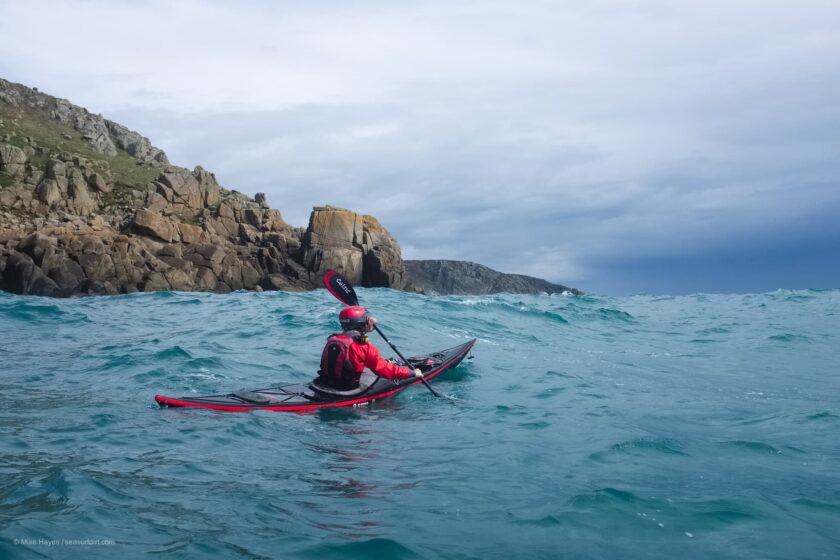
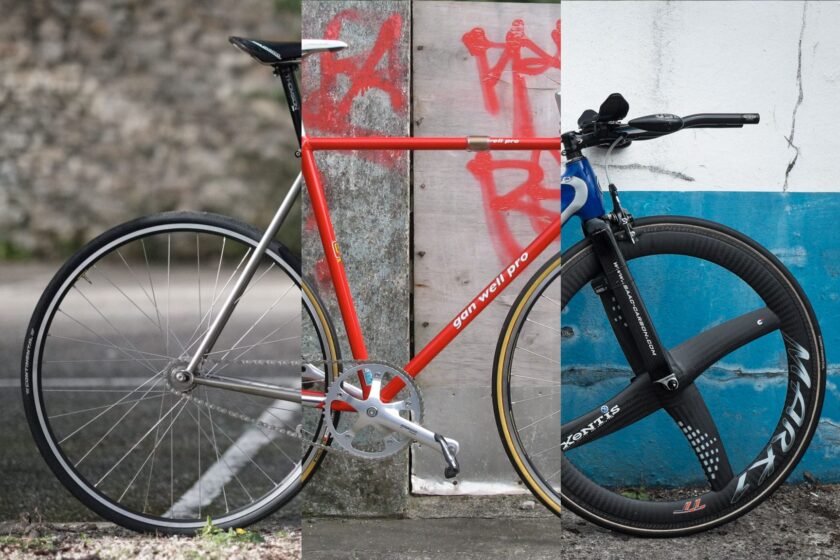
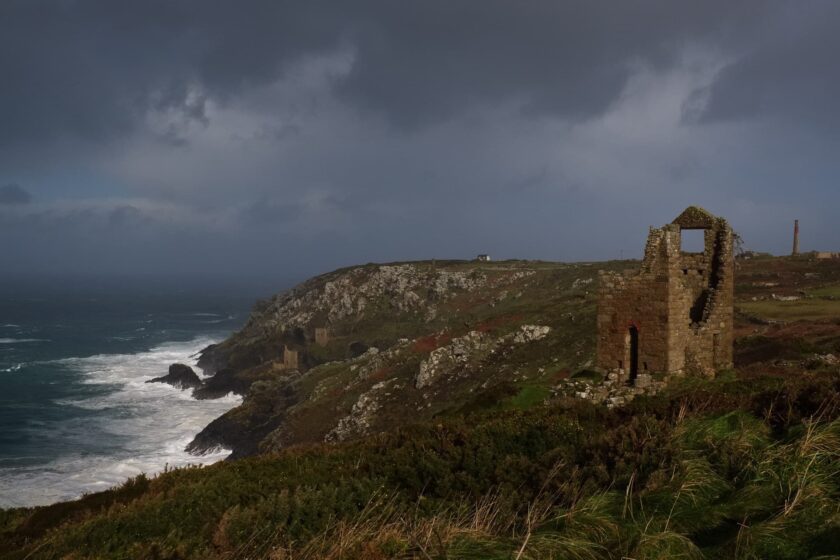
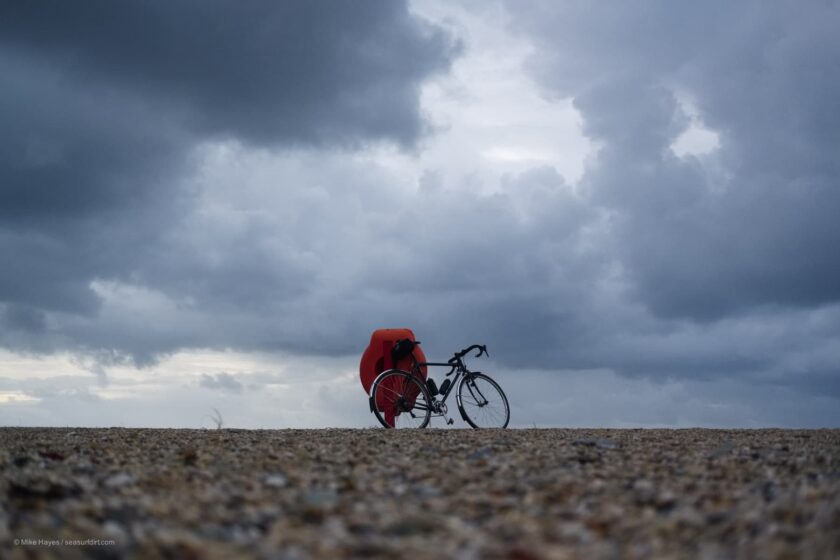
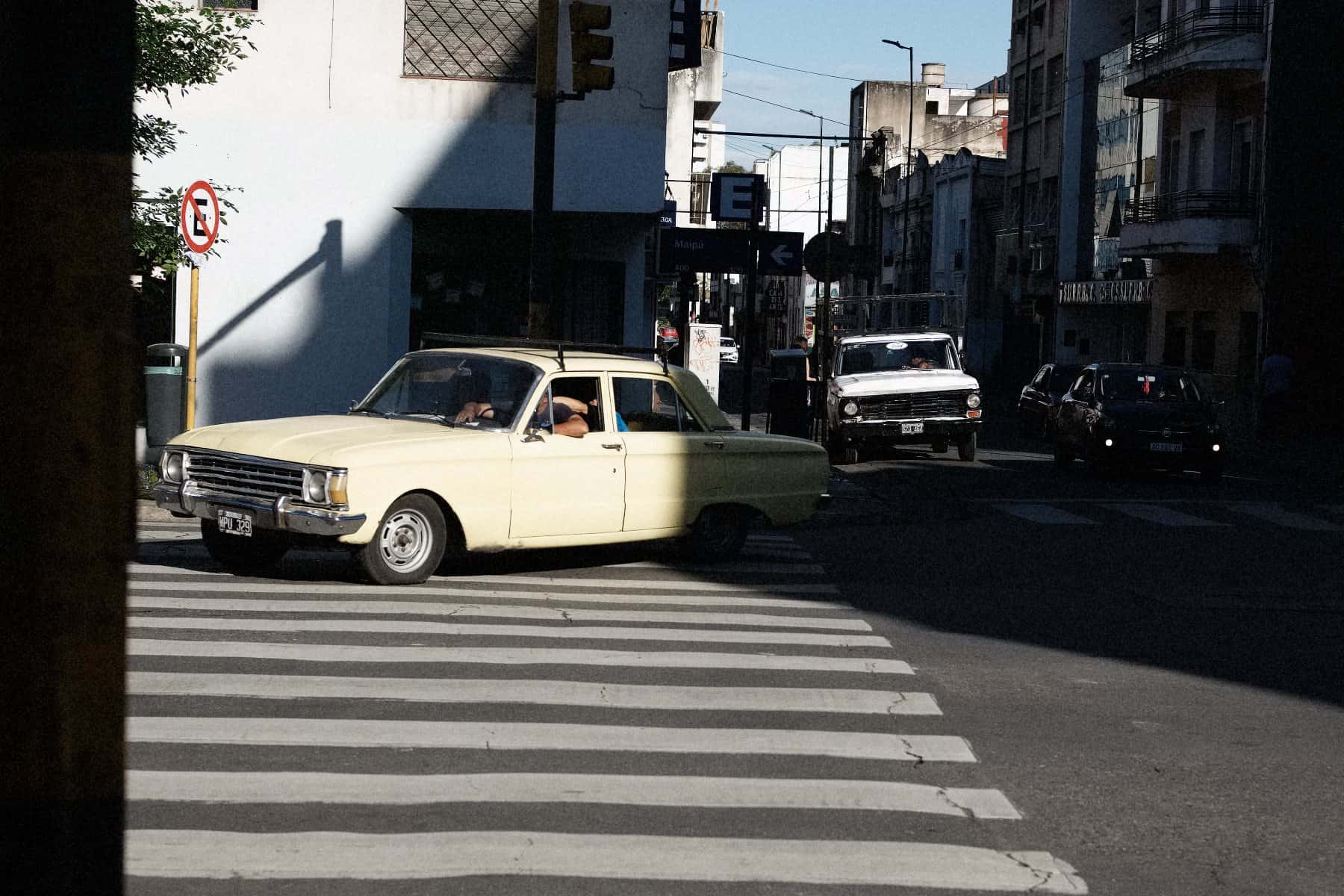
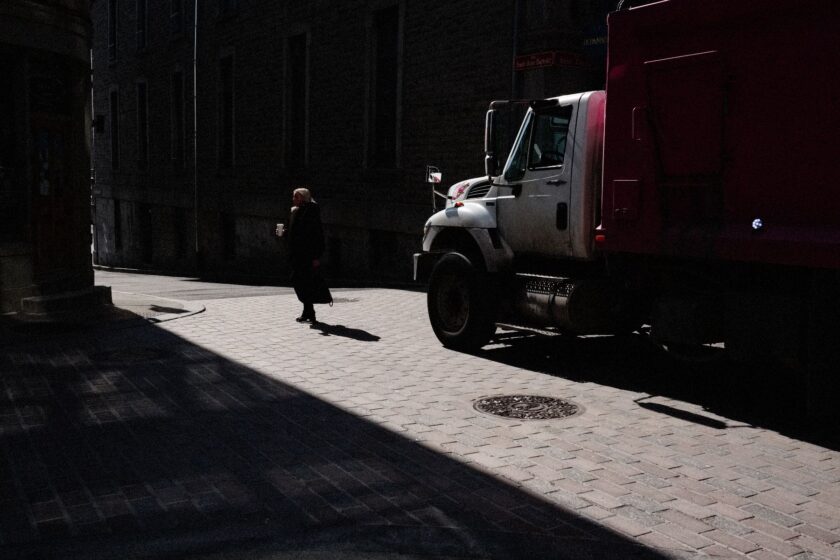
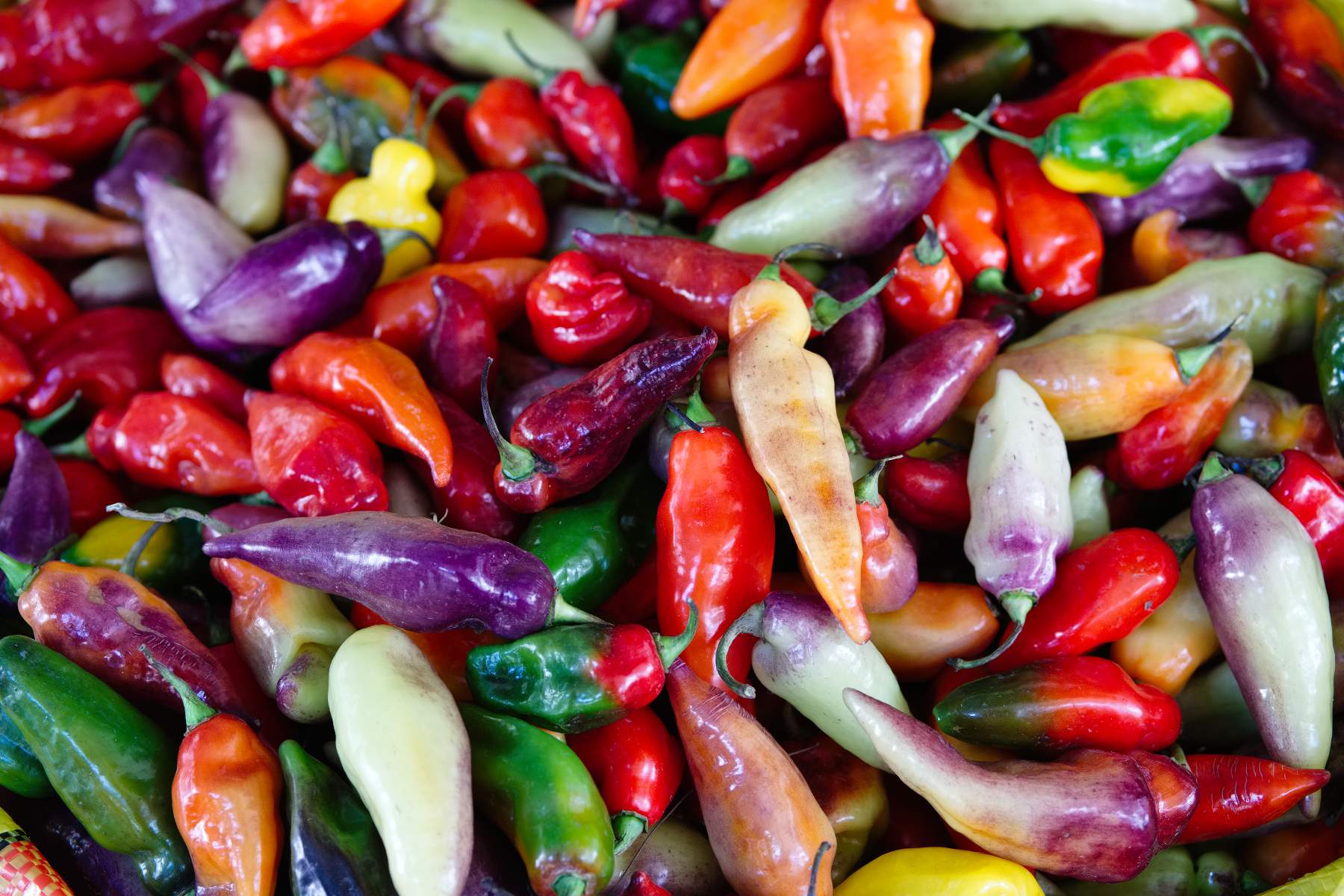
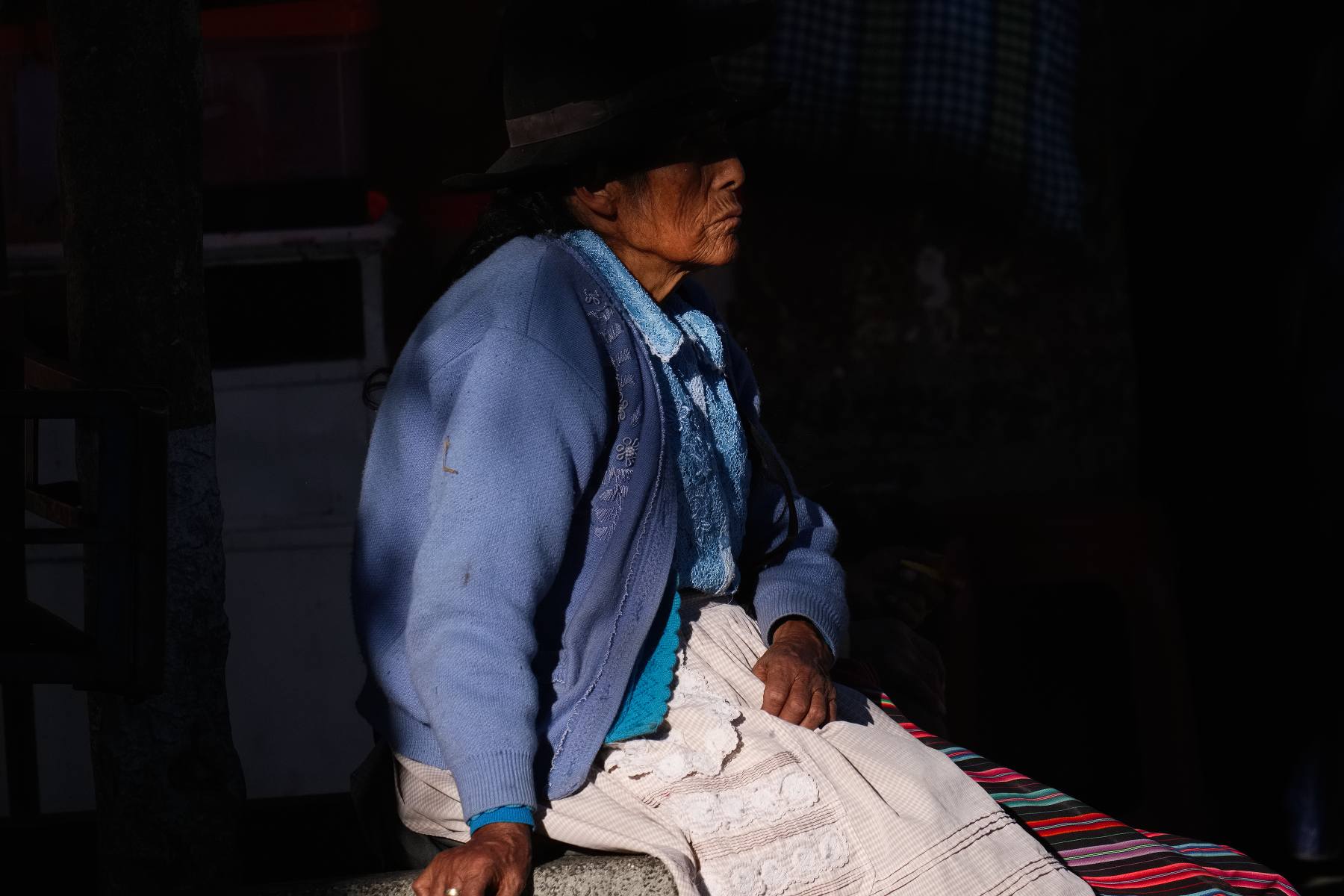
Well, I found this an interesting post, not least because I have an X-T2 and a similar set of primes (18, 35, 50)! I also came into the Fuji system through the X100S, which I have only just sold. I actually bought the 18-55 zoom for a trip to Armenia last September, just taking that lens. I really appreciate the quality of the primes and the constraints they provide, but I found that, when riding with others, having a zoom was incredibly useful for flitting between stationary and opportunistic riding shots. Maybe I’m lazy when it comes to swapping lenses I’ve been leaning towards selling all the above except for the 35mmf2 to fund the purchase of a new 16-80WR. It feels like it could be a perfect bikepacking lens, although reviews are mixed. Not sure I will notice the sharpness issues that pixel peepers report, but who knows…
hey Chris, cheers for taking the time! I totally understand where you’re coming from with regard to the zoom, especially for riding in company it makes a lot of sense. I’ve always struggled with a zoom though when I’m off the bike, I find I just can’t do street photography with anything other than a single focal length on my camera, it just gets in the way, having a range. t would be interesting to hear how you get on with the 16-80, should you decide to go down that path.
Chris, take a long look at the 16-80, its pretty big (not compared to a Nikon/Canon of course) next to the 18-55, also if you are sure you want to go with a zoom and prepared to handle the weight and size consider the 18-135, I used one throughout a trip to NZ back in 2015 and it worked really well, I was fully panniered and used an Ortlieb bar bag to accommodate it.
Great post Mike, I’m using a 16mm f2.8 alongside the 23/50 combo, not used the 1.4 versions since I got them, should really sell them on, if I had only one kens to choose it’d be the 27mm, I really like that focal length, although the lens itself feels a bit fragile, if Fuji were to make a WR version of it I’d buy that for sure.
Hey cheers for writing! I’ve no experience of the 16, or the 27, although I have considered it in the past. I would actually rather like the 90mm f2WR at some point despite the weight and bulk, but it’s an expensive lump for a lens that is likely to be an outlier for what I like to do. I kind of feel the same as you about the 1.2/1.4 combo.. but then I take one or the other out and think “oh this is lovely…” and change my mind. again.
I also have the 90, its a lump alright, plus there’s a floating element in there that makes really disconcerting noise as it moves even when you are just carrying it, I wouldn’t dream of taking it on the bike.
oh that’s interesting, cheers! If was doing a lot more riding with mates I might consider a zoom, just for the riding, but I seem to be a bit of a Billy no-mates at the moment so it’s not an issue. Do you have any experience of the 100-400? not for riding.. although perhaps with the dummy for carting it around.. with lockdown I’ve been revisiting old ideas about photographing birds and have long thought that perhaps a journey through scotland, on the dummy, with such a lens on board could be a fun thing to do. Expensive though….
yep, I used it lots in NZ for birding, its okay but in my opinion the mirrorless system is still behind DSLRs for birding, my Nikon system is far better for that use but I guess its only a matter of time before they catch up, I actually left it behind with an XT3 for my daughter to use over there ( long boring story about repatriation flights and limited luggage allowance) will be interesting to see how she uses it once she’s up to speed
Again its big and heavy, but then all lenses in this class are I guess.
cheers for the insight, I did wonder how it stacked up. I’m bad at spending ££ anyway so it’s unlikely I’ll do anything about it :-)
Thanks Steve… I hadn’t actually considered the 18-135… Any preferences between the two, as you’ve used both?
I used the 18-135 purely so that I didn’t have to change lenses, at the time I was fairly paranoid about getting crap on the sensor ( not having a mirror/shutter to sheild it) I was prepared to put up with less ‘perceived’ image quality as a trade off ( it wasn’t an issue) and was glad of the extra at the long end, however these days I’m more conscious of the weight I’m lugging around and for the most part I know use a Canon G1x mk3 when touring, I might throw the Fuji X100t in if there’s any spare space but that’s simply because I enjoy using that camera over the Canon.
In terms of IQ, I think the 18-55 is better but to be honest I’m less and less interested in that as such, like a lot of us I got sucked into the digital IQ bollocks when really it’s (at least for me) more about the picture quality rather than the image quality, back in the days of film, adequate lenses were adequate, the film stock and lighting conditions far more important ( as far as small format was concerned)
good philosophy re picture quality.
I tend to agree. How did you find using the 16-80 compared to the other two?
the 16-80 feels like a higher quality lens, aperture and zoom ring are reassuringly solid, image is good at all lengths except the 80 where is still ok, without having it to hand I think its a bit bigger than the 18-135 from memory, also a big bonus is that it is WR
I barely used it on the bike and when I did it was inside an Outer Shell basket bag along with the 100-400 as I riding specifically to photograph crashing waves so only out for a day, I did take it on all the hiking we did around Mt Cook, it was perfect for that inside a Lowepro rucsac with all the other stuff you’d need for hiking around there ( waterproofs, food, stove, binoculars etc) the focal length worked out just fine, example below, roughly edited in snapseed
https://flic.kr/p/2iFpFHz
Thanks, that’s useful. Nice shot. The 16-80 is a little smaller and lighter and I think the extra wide end could be useful. It also comes bundled with the XT4, and is relatively cheap in that combo… so I’m contemplating selling other gear that doesn’t get used much which, along with some recently sold, could give an almost neutral cost way forward…
should have said, I also used the 16-80 a lot this last year in NZ but not on the bike so much
The above has been a really great discussion, cheers! Has opened me to non-prime possibilities for scenarios where no street photography is involved.. weekends riding with mates, that sort of thing. I did try street photography with a zoom once but I just can’t, it doesn’t represent how I see the world.
Found my way here after Cass tagged you in an IG post about Fuji. You have a nice site filled with great stories and images. I’m considering an X100v and would like your thoughts on weather sealing and the need for the lens filter which Fuji claims is needed for weather protection. I did’t see any filters on your glass. Coming from a god awful heavy Nikon system, I’m looking to cut weight and simplify. I went down the UV filter rabbit hole and honestly am not sure they actually protected the lenses, but I do know they’d cause flare if I wasn’t being attentive.
Keep up the good work.
hey Bob, thanks for writing, and for the kind feedback. On weather sealing.. it’s felt like a “nice to have” in dusty and damp environments but tempered by knowing that I used my old x100s and my unsealed Fuji lenses in dusty, misty environments without any problems anyway. I think it probably means I can be less careful about the weather sealed stuff in terms of protecting it when carrying/on my bike but habitually I tend to try and look after my kit anyway… It doesn’t feel like a deal breaker to me.
With regard to filters, habitually I’ve always used one with my lenses because it was always thought to be a good idea… I’ve noticed however that my filters never seem to suffer particularly so when the x100f turned up needing an adapter ring to use a filter I just never got around to bothering. In part that might be because it was a second hand camera, but I also figured I’d just make an effort to look after it and clean the lens, if needed, carefully. I do have a mate who works as a photographer in some very hostile, abrasive environments – inside working mines for example with a lot of dust, grit, and humidity – and his filters seem to be very short lived before they’re badly abraded, but for most everyday use I’m not sure if the risk of going without is particularly severe…
I probably haven’t helped much at all…!
Thanks for the speedy reply. Looking forward to dipping my toe in the Fuji universe if new stock of the X100v ever makes it to the US. It’s been back-ordered for months.
oh, that’s a pain. I know Cass loves his X100v, I feel same about my X100f, so have fun with it when back in stock!
Hey Mike, I came across this blog from searching for solutions to carry a camera on a bikepacking trip. Funny enough I found out that we share the same concept for the ideal bicycle travel kit with the 23mm and 50mm f2 WR lenses (except I carry a XT-4 instead of the X-Pro3).. what a great combo. I think the only downside is the nature of having to change lenses from time to time. On zooms I never found myself to get to the point of “seeing” or visualizing the picture before taking the camera to my eye due to the variety of focal lengths, an important skill when you’re making the decision to stop I think (especially on a bike while climbing, descending or generally being in the flow)..but maybe it’s just me.
One question: do you carry a tripod on your trips and if yes how? I know it’s a ridiculous luxury but still a nice to have.
hey, cheers for writing. That’s very true about making the decision to stop… there’s a particular moment at which the scene ‘fits’.. can’t ever find that with a zoom.
as for a tripod, no I don’t. I did once fiddle around with a clamp that would fit on the end of my handlebar with the bike propped up somewhere but never did anything serious with it. These days if I need a longer exposure I just prop my camera on a rock, sometimes on my jacket for some cushioning and position adjustment.
Hi Mike,
An Aussie here in Uk for another couple of weeks before returning home. Mike, I’m looking for a camera bag like yours for my X100S and XE3 with two primes for bikepacking trips with my Bombtrack beyond +. I also want to strap it to the front of my dry roll – Jones H loop bar setup.
Are your bags available anywhere please?
Love the article too by the way
Cheers
Dave
Hi Dave, thanks for writing, and the nice fedback. At the moment the camera bag isn’t, have been too busy with the Choughstuff Seatpack to develop it into something I’d be happy to make available. It’s something I’d like to work on over the next couple of months if time allows.
cheers!
Mike
This article is fantastic, an update would be wonderful!
Hi Bob, that’s very kind of you, cheers! As far as an update goes, there isn’t one really beyond “I’m still using exactly the same kit”. I know the Fuji X100vi is now out and there will most likely be an X-Pro 4 along later in the year but at this point I’m still really happy. The X-Pro 2 has proven to be a super-durable camera, mine is now 8 years old and I still find it to be brilliant. Largely the move to the new 40Mp sensor feels like it’s mostly just going to increase my storage overhead. 24Mp still feels enough for the kind of photography I like, and makes cracking prints, so at this point not feeling particularly compelled to open my wallet and change anything….! It does feel as if digital cameras are now so good that unless a new generation brings a “must have” feature there’s little incentive to buy the latest kit.